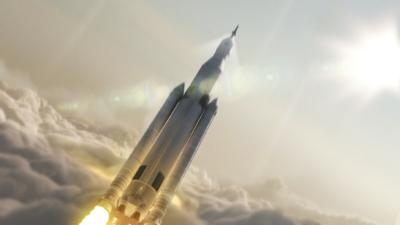Tue, Nov 22, 2016
Request For Information Seeks Input From The Public On Cost Reductions
NASA has posted a Request for Information (RFI) calling for input from the public on how the agency might trim the cost of developing its Space Launch System and Orion capsule.

According to the description page posted to the GSA website: "NASA" invites industry and academia to submit responses to this Request for Information (RFI) to assist NASA in maximizing the long term efficiency and sustainability of the Exploration Systems Development (ESD) programs, including the Space Launch System (SLS), Orion, and Exploration Ground Systems (EGS) by minimizing production, operations, and maintenance (POM) costs. NASA will use information obtained as a result of this RFI on a non-attribution basis as part of future planning. The information submitted in response to this RFI will inform future acquisition approaches and concepts."
The Agency says in the document that with the ESD programs now past their respective critical design reviews (CDRs) and the Exploration Mission 1 (EM-1) flight articles in production, "NASA is transitioning from design and development to long-term affordability and sustainability within a broader exploration framework. In this evolving environment, NASA is looking to transform traditional acquisition approaches and acquire services with low overhead and additional direct accountability to providers for those acquired services. For NASA to change acquisition methods, considerations of proprietary design and intellectual property should be discussed. Further considerations that allow an effective corporate business plan should be discussed. The approach should discuss the sustainability of a new acquisition process from a corporate revenue position."
There is some sense of urgency to the RFI, as the federal government will be under new management in January. While President-elect Trump has said that he wants NASA to concentrate on the exploration of Mars ... the prime mission for the SLS and Orion ... budget cuts to NASA could make that far more challenging.
Engadget reports that Bill Hill, NASA's Deputy Associate Administrator for Exploration Systems Development, told Ars Technica earlier this year that the program is "just way too expensive today. It's going to take some different thinking and maybe a little bit more risk taking than what we're wanting to do today."
While private space companies such as SpaceX, ULA and Blue Origin have heavy-lift rockets under development. What remains a wildcard is whether NASA will be able to build and maintain a heavy-lift system that will be competitive with those built by private industry. The agency hopes President Trump will continue to invest in the SLS and Orion projects, and that it will be flying by 2023.
The deadline for making input into how the programs might save some money is December 23.
(Artist's rendering of SLS pictured in file photo)
More News
Terminal Radar Service Area Airspace surrounding designated airports wherein ATC provides radar vectoring, sequencing, and separation on a full-time basis for all IFR and participa>[...]
Aero Linx: Utah Back Country Pilots Association (UBCP) Through the sharing experiences, the UBCP has built upon a foundation of safe operating practices in some of the most challen>[...]
From 2010 (YouTube Edition): Imagine... Be The Change... Inspire FROM 2010: One of the more unusual phone calls I have ever received occurred a few years ago... from Anousheh Ansar>[...]
(Pilot) Felt A Shudder And Heard The Engine Sounding Differently, Followed By The Engine Chip Detector Light On April 14, 2025, about 1800 Pacific daylight time, a Bell 206B, N1667>[...]
Also: AMA Names Tyler Dobbs, More Falcon 9 Ops, Firefly Launch Unsuccessful, Autonomous F-16s The Air Force has begun ground testing a future uncrewed jet design in a milestone tow>[...]
 ANN's Daily Aero-Term (05.07.25): Terminal Radar Service Area
ANN's Daily Aero-Term (05.07.25): Terminal Radar Service Area ANN's Daily Aero-Linx (05.07.25)
ANN's Daily Aero-Linx (05.07.25) Classic Aero-TV: Anousheh Ansari -- The Woman Behind The Prize
Classic Aero-TV: Anousheh Ansari -- The Woman Behind The Prize NTSB Prelim: Bell 206B
NTSB Prelim: Bell 206B Airborne-NextGen 05.06.25: AF Uncrewed Fighters, Drones v Planes, Joby Crew Test
Airborne-NextGen 05.06.25: AF Uncrewed Fighters, Drones v Planes, Joby Crew Test



